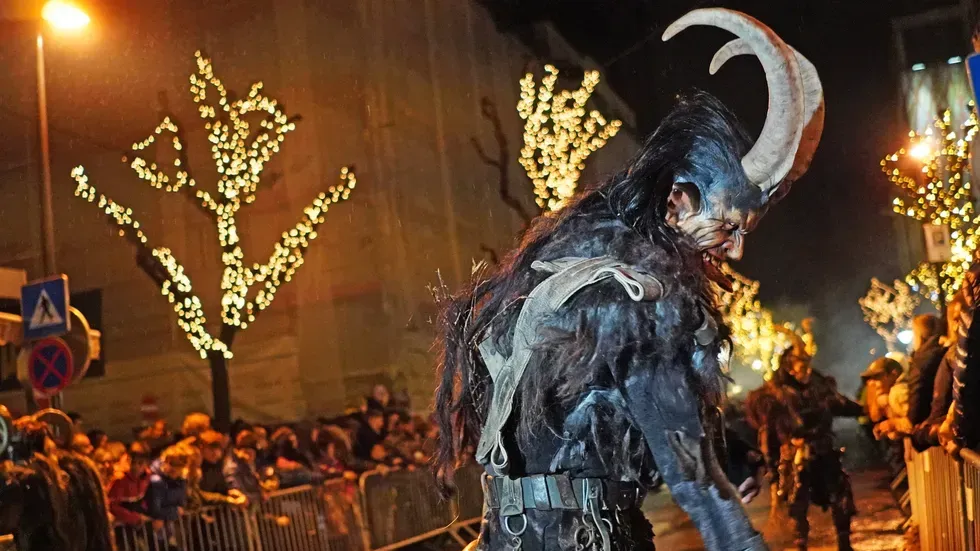Almost everyone is familiar with the figure of the Krampus, but perhaps less so with who he was in the original folktales.
Many people refer to him as the anti-Santa, or the demon opposing Father Christmas, the arch-enemy of the red-clad, big-bearded, potbellied gentleman. But in fact, Krampus in the Central and Eastern European tradition is the helper of the benevolent Saint Nicholas, who travels with him as a constant companion during the holiday season to do his dirty work for him: carrying coal and bringing birch rods to misbehaving children as punishment.

Although the devil-shaped figure of Krampus originated in Austria, there are now many versions of him all over Europe. In some parts of Germany, the legend is known as Knecht Ruprecht, who wears a dark, hooded robe, and takes children to the depths of hell, while in some regions of France it is known as Père Fouettard, meaning ‘Father with a whip’, and in Switzerland under the name Schmutzli.
In Styria, it is still a tradition in early December to have a huge Krampuslauf (Krampus Run) at night, where young people dress up as fairy tale characters, wearing masks, smudging charcoal on their faces and bodies, and go door to door while rattling their chains. Similar ‘St Nicholas parades’ are also common in certain parts of Hungary.



Cover photo: Julia Meyer, Zeit Online
Source: Hamu és Gyémánt; David Sedaris: Holidays on Ice (1997)

Design objects are fun! | Regional Gift Guide—design edition

Once upon a time, there was a brotherhood | Russia-Georgia Friendship Monument










